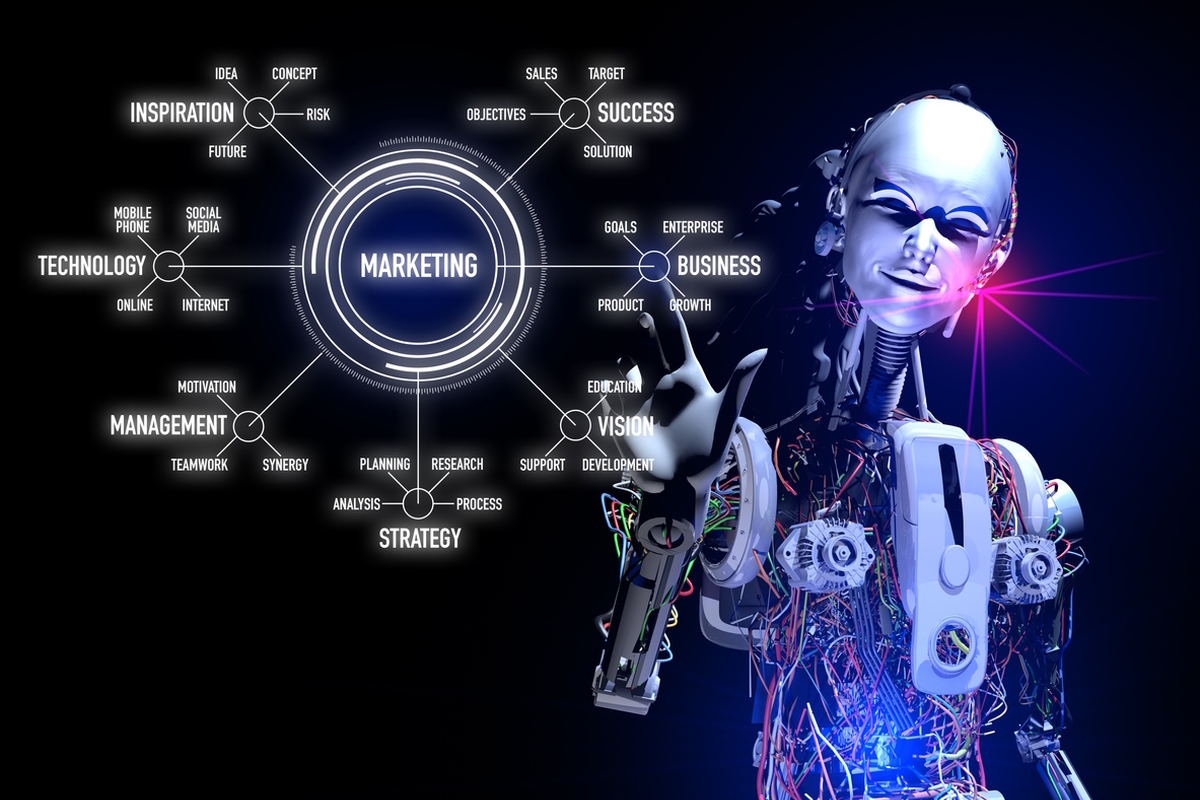ChatGPT for marketers – replacement or ren-AI-ssance?

Aaron Goldman at Mediaocean explains that AI tools like ChatGPT won’t be replacing skilled marketers any time soon
The conversation around ChatGPT and the rise of AI-driven content creation has been the hot button issue of the start of 2023. The discourse around ChatGPT has been almost unavoidable, with many business leaders weighing in with their opinions on how it will change marketing– for better or for worse.
But is generative AI simply a new set of tools for marketers, or could its speed and accessibility spell the beginning of the end for marketing teams altogether?
How ChatGPT works
ChatGPT is a natural language processing tool, built from OpenAI’s GPT-3 family of large language models. The platform allows users to have human-like conversations and its underlying technology is being built into a number of applications including Microsoft’s search engine, Bing.
Rather than indexing web pages on the internet, ChatGPT’s responses are learned from the huge swaths of data and writing skills it was trained with. It has many functions from brainstorming ideas to writing essay-length streams of copy, describing art in detail, and even coding software.
One of the key features is that ChatGPT remembers your previous queries – the G stands for generative – so that each interaction can build upon the previous request. As ChatGPT is still in its research and feedback-collection phase, there is both a free tier and paid subscription option for priority access and faster response times.
ChatGPT’s marketing capabilities
A major capability of ChatGPT and other AI language tools is research. ChatGPT can essentially act as a search engine with less reading, fewer clicks, and less time wasted. The tool has the capacity to select relevant content from various sources or inputted URLs and provide quick summaries of key information. This is very useful in researching content, generating an effective marketing plan, and creating user personas.
Probably the most hotly discussed use for ChatGPT is content creation. The tool outlines and builds out ideas for all kinds of content but is particularly useful for shorter-form copy such as social posts, emails, and ads. You can even ask ChatGPT to inject humour, use puns, jokes, and sarcasm, or break up and edit existing content to make it more readable.
The tool has already been used to create product descriptions, video captions, blog posts, and content recommendation lists, to name just a few.
ChatGPT can also be an ideal lower-cost tool for search engine optimisation. It quickly researches and finds synonyms for keywords, clusters content, and writes entire SEO-focused blogs and landing pages. While all ChatGPT outputs should be checked over by an SEO expert, the tool minimises the need for complicated Excel sheets, expensive SEO tools, and advanced coding skills. And it delivers all this at the click of a button.
ChatGPT is also able to enhance the customer experience by improving the speed and accuracy of responses to customer enquiries – particularly useful in customer care chatbots. This frees up time for customer service agents, shortens response times, eliminates any inappropriate agent behaviour, and by improving 24/7 customer service quality, assists marketers in understanding and addressing customer pain points.
The tool can also be used for training purposes, allowing companies to simulate real conversations to be used in marketing, cybersecurity, and customer service simulations.
So, will ChatGPT replace marketers?
Despite its great potential for speeding up long-winded manual processes, ChatGPT might not be as career-ending as many believe it to be. Like all other technologies, ChatGPT is only as clever as the person using it or, in this case, the person asking the questions. Getting the most accurate and human-like response from this tool relies on using clever prompts and expanding on its answers with multiple iterations, all requiring operation from a human who is comfortable and knowledgeable about the platform.
By definition, ChatGPT cannot replace the process of creativity – the AI is unable to create truly original thoughts in the way a human can. So, while ChatGPT supports creative ideas and enhances existing content, it lacks the human experience and character required to build meaningful connections with customers.
With ChatGPT only able to create responses based on the information it was trained with, there is also a risk that the system can generate incorrect or misleading information. The tool is also at a higher risk of spitting out offensive, biased, or out-of-date information, based on what it was taught as it was built.
Augment, don’t replace
Automation is now a priority for organisations in industries from manufacturing to retail, helping to free up workers’ time and boost productivity. While the capabilities of ChatGPT are too narrow to replace humans entirely, the technology can definitely help to automate marketing tasks to allow professionals to work more efficiently.
A business without a clear strategy on how they will use ChatGPT is at a severe competitive disadvantage. After all, those who fear adopting new technologies are always left behind. Those that learn to use AI in a creative way, constantly pushing the boundaries of what their marketing can achieve, will see the greatest impact on customer experience, productivity, and marketing innovations.
And before you ask – no, this article wasn’t written by ChatGPT. But I would have written it a lot quicker if it had been.
Aaron Goldman, CMO, Mediaocean
Main image courtesy of iStockPhoto.com

Business Reporter Team
Most Viewed
Winston House, 3rd Floor, Units 306-309, 2-4 Dollis Park, London, N3 1HF
23-29 Hendon Lane, London, N3 1RT
020 8349 4363
© 2025, Lyonsdown Limited. Business Reporter® is a registered trademark of Lyonsdown Ltd. VAT registration number: 830519543





